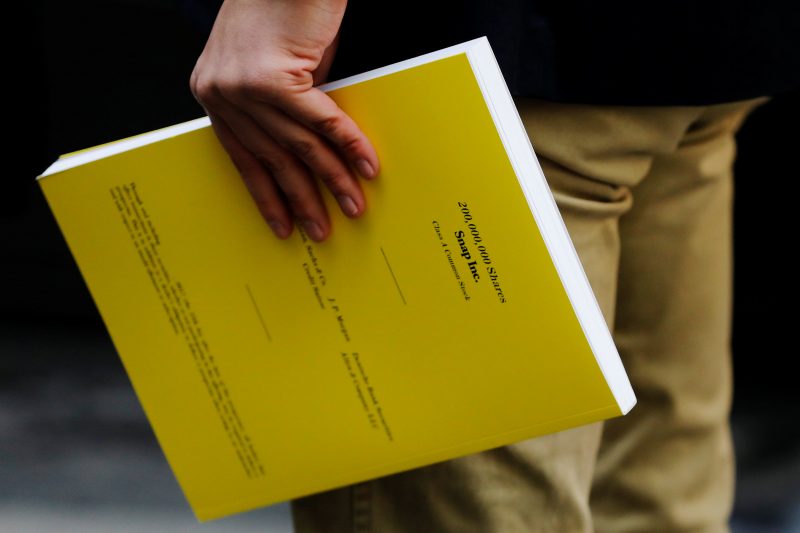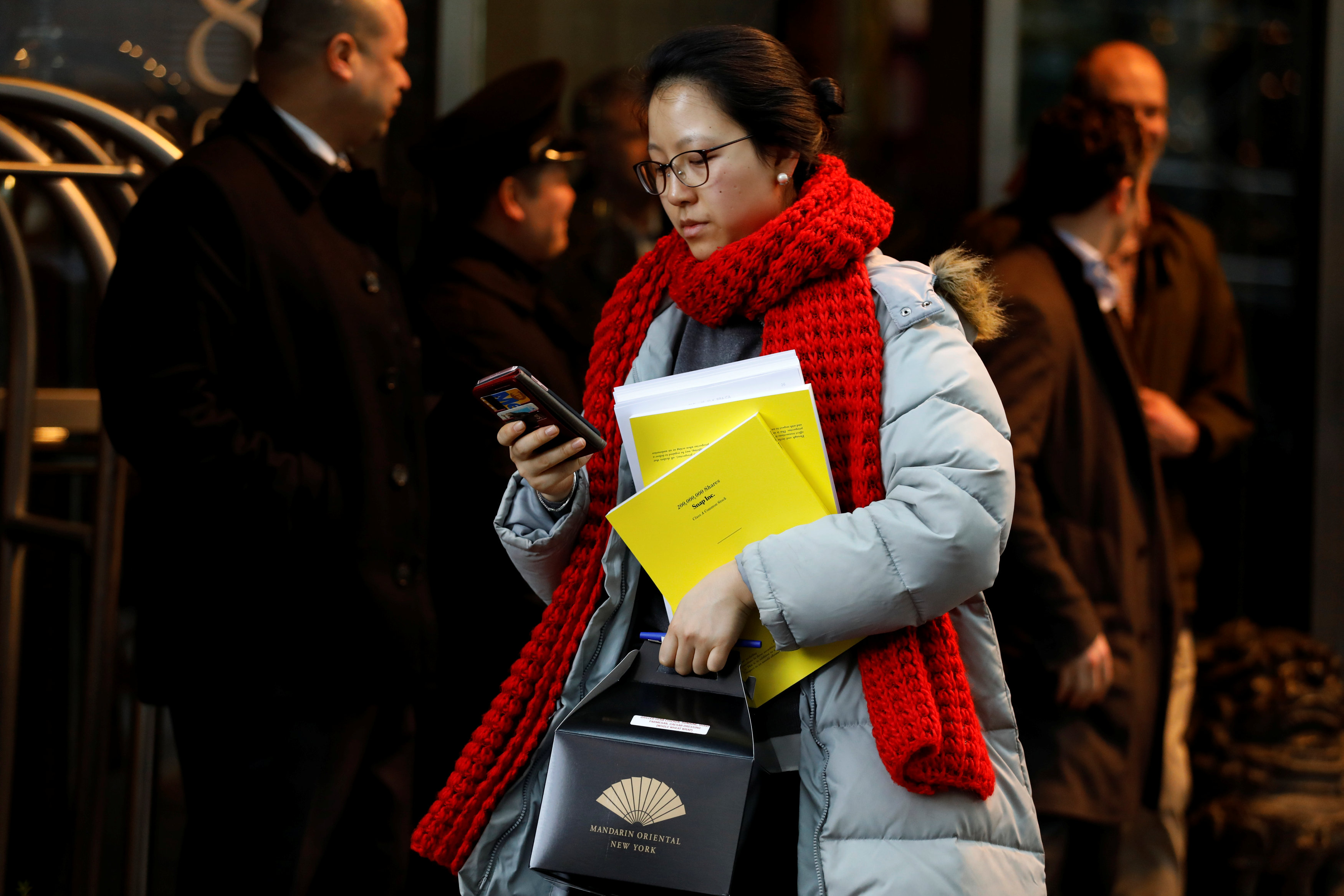Snapchat executives in New York were peppered with questions on Tuesday about competition from Facebook, user growth for the disappearing-message app, and accessibility in less developed markets as they pitched prospective investors on the company’s shares.
Snap Inc., Snapchat’s parent company, is looking to raise as much as $3.2 billion in a much-anticipated initial public offering. The executives are traveling from London to San Francisco as they try to drum up interest in the sale.
Tuesday’s meeting, on the 36th floor of the Mandarin Oriental hotel in New York City’s Columbus Circle, drew a standing-room-only crowd of nearly 500 people that one investor said included “the entire hedge fund mafia.”
Inside the hotel ballroom, guests bearing the bright yellow IPO pitchbooks distributed at the event were treated to a light, if uninspired, lunch paired with heady prognostications by Snap’s management.
While attendees nibbled on turkey sandwiches and caesar salad wraps, Snap’s 26-year-old CEO Evan Spiegel, chief strategy officer Imran Khan, and CFO Drew Vollero answered questions from the crowd, according to people who attended the event.
"We have an interesting perspective on the world based on what people are seeing, and that's where I'm spending most of my time today," Spiegel, who was dressed in a suit but no tie, told the crowd, according to one investor who was present. Spiegel ticked off various statistics as he answered questions, highlighting the fact that 2.5 billion "snaps" are created on the service every day.
The meeting lasted less than an hour and consisted entirely of a question-and-answer session. The company had already released an introductory video online on Friday.
'Respectful but skeptical' mood
Snap, which aims to begin trading on March 2, is seeking a valuation of between $19.5 billion and $22 billion. The offering is one of the largest tech IPOs in years and is being compared to past high-profile internet IPOs such as Facebook, Alibaba, and Twitter.

But while Facebook's stock has soared since its offering, Twitter has languished. And guests at Tuesday's roadshow in New York did their best to get a read on which trajectory Snap would take after its Wall Street debut.
Snap's sudden slowdown in user growth, which could echo the trouble that has plagued Twitter, appears to be among the top concerns on the minds of prospective investors.
One investor at the event told Business Insider the mood in the room was "respectful but somewhat skeptical."
The investor said they did not plan to buy Snap shares unless the company lowers the price.
The questions were tough, according to investors at the meeting that Business Insider spoke to. Here are the main takeaways from a handful of money managers who attended the roadshow. They all asked not to be identified.
- Investors were concerned about how Snap would generate revenue (or monetize) its user base, and investors debated the issue, according to one source. Snap sold its first ad at the end of 2014 and grew revenues from $58.7 million in 2015 to $404.5 million in 2016. The company's costs also came up. Two questions focused on the deceleration in Snapchat user growth in recent quarters. In the fourth quarter, for example, Snap says it had 48% more users than a year earlier. That's the slowest growth rate for any of the 12 quarters for which it reported numbers. Investors were concerned about the story feature built by Facebook-owned Instagram to compete with Snapchat's stories, which is a way for users to post images or videos for up to 24 hours. Investors wanted to be sure that Instagram stories won't affect Snap's growth. Snap's leadership team said they're confident Facebook won't affect its business. They also attributed slow growth in the fourth quarter to problems accessing the app from Android phones. They said Snap will develop on Android at the same time as on Apple's iOS platform to help alleviate issues with the app on Android phones.Spiegel emphasized Snapchat's high user engagement, adding that the 20-year-old cohort spends about 30 minutes a day on Snapchat, and that at the end of the day advertisers are concerned about that demographic. Another person, however, asked a question about the app's young user base and whether there was a strategy to expand beyond that cohort (Answer: No. Snap pointed to markets like Norway, where the service has become popular across age groups without Snap doing anything different). A concern arose regarding problems with the Snapchat app working only on 4G networks, which could make it tougher for internet users in undeveloped countries to use the service. The company says it is focused on expanding more in developed markets, like Norway, for example. One fund manager in attendance said he was disappointed not to hear any discussion of the company's corporate governance structure - specifically the issue of voting rights. The public shares that Snap will be offering at IPO have no voting power - an unusual structure that could test the commitment of investors. The fund manager said that although this was his main concern going into the meeting, it wasn't addressed.
Still, attendance at the event illustrated the buzz and interest surrounding the company. Roughly two-thirds of attendees were seated at round tables in the front of the ballroom, while others filled narrow rows of seats, packed tightly, in the back of the room.
One hedge fund investor told Business Insider that despite concerns raised, he is still looking to buy Snap shares. This investor said the valuation is a fair price.
"It's not that crazy when you think about the total ... market they're trying to go after," this person said, referring to the digital-advertising market taking share from traditional broadcasters.
This story has been corrected to update a figure from 2.5 million to 2.5 billion snaps.
